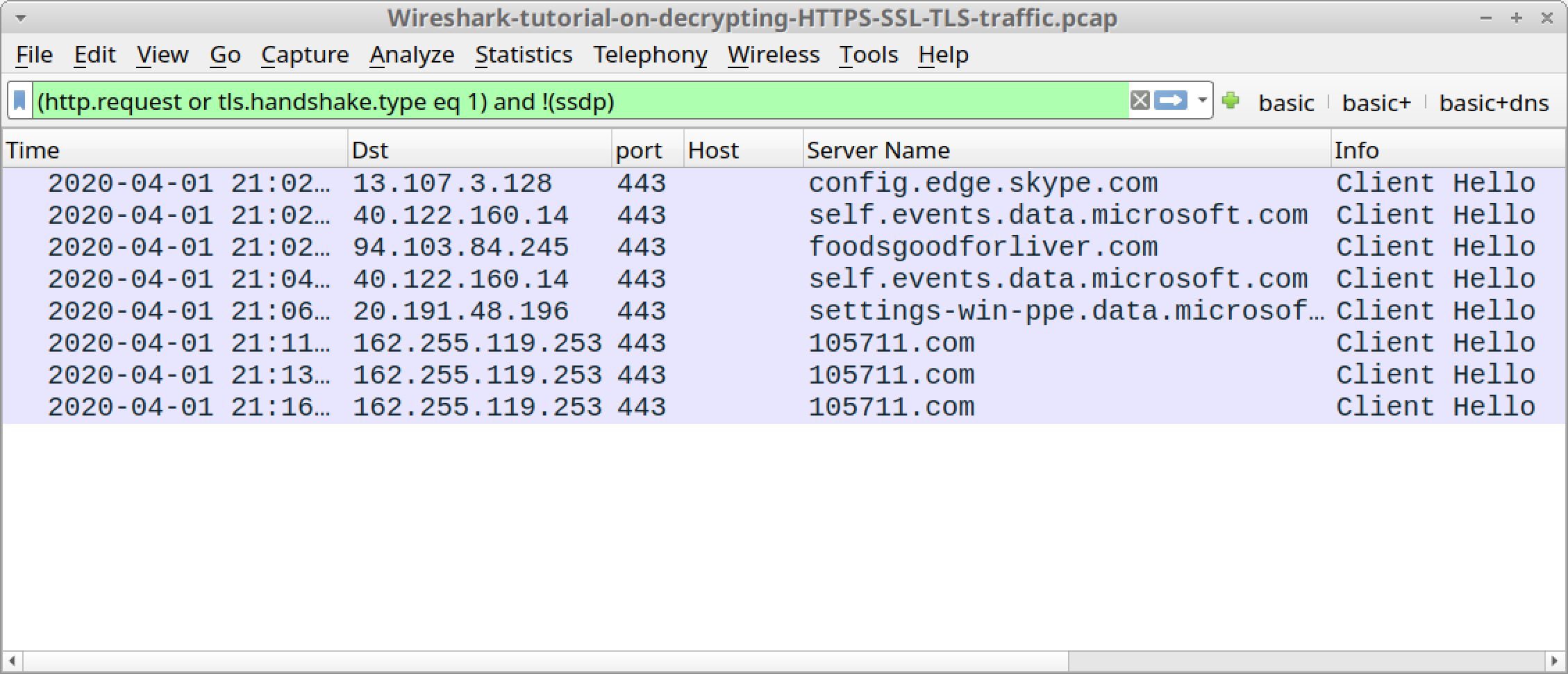
As a result, to ensure that DNS packets appear when searching for domain names, the filter frame contains “google” should be used instead of frame contains “”. Note that DNS records use various separators in place of literal dots “.”. For example, if I wanted to find my dns query for dns and frame contains "cloudshark" Last but not least, you can of course always use the concatenation operators. You can even get more specific, using the “contains” filter to look at specific parts of a frame, such as tcp contains or eth contains. For example, if I only want to view the DNS query with transaction ID Oxb413: The frame contains feature can also be used for Hex values.

Take a look at this capture with the above filter applied: …will show you only those packets that contain the word “cloudshark” somewhere in them.ĬloudShark lets you embed these filters right in the URL that you share. The “frame contains” filter will let you pick out only those packets that contain a sequence of any ASCII or Hex value that you specify. You may know the common ones, such as searching on ip address or tcp port, or even protocol but did you know you can search for any ASCII or Hex values in any field throughout the capture? You can read more here.The great thing about CloudShark’s capture decode is that it supports all of the standard Wireshark display filters. Wireshark can be used with Ettercap to perform Man in the Middle attacks. Check out Wireshark’s documentation for examples and more information. Other options that are available include filtering by IP address, Ethernet address, ports, source, destination, and much more. You might also find this list of ICS protocol filters useful. You can use the Wireshark Protocol Reference for a complete list of all the protocols you can filter by. If you want to filter by protocol, most likely it will consist of you just typing the protocol name in lower case: tcp, dns, and so on. If you start typing in the filter input field, you’ll see suggestions on what kind of filters you can use. There are a bunch of filters you can apply to your captures to make it easier to find what you’re looking for. For example, you could set a Capture Filter to capture all the TCP packets, and then view only the ones to or from a specific IP address using Display Filters. You can combine Capture Filters and Display Filters as you please. Display Filters can also be changed mid-capture, since they only change what is displayed on screen - not the capture itself. Wireshark will still capture all of the traffic, but only packets that match the display filter are shown in the list. You cannot change the Capture Filter mid-capture.ĭisplay Filters are set after you start a new capture. They limit the capture to only catch packets that match the capture filter - it makes the whole capture smaller, since it isn’t capturing all of the traffic. Wireshark Filtersīefore we get too deep into Wireshark filters, you should know that there are two kinds of filters in Wireshark: Capture Filters, and Display Filters.Ĭapture Filters are set before you start a new capture. You can stop capturing packets at any time by clicking the red square button labeled “Stop capturing packets” in the top left corner of the screen.

You can check if you have promiscuous mode turned on by clicking Capture > Options and check the checkbox at the bottom of the screen. This means that it not only captures traffic to and from your computer, but all the traffic on the network. You should see new packages dropping in - these can be of all sorts of protocol types.īy default, Wireshark has something called “promiscuous mode” activated. If you click on any of the list items, you’ll be directly redirected to the capturing page, and a new capture will start automatically. You should also see graphs next to each network - these represent the amount of traffic currently in them. If you want to filter for all HTTP traffic exchanged with a specific you can use the and operator. Underneath the filter input, you’ll see a list of all the networks that your computer is currently connected to and that you can listen in on. Filtering HTTP Traffic to and from Specific IP Address in Wireshark.

When you open Wireshark, you should see something that looks like this:
#WIRESHARK PROTOCOL FILTER EXAMPLE DOWNLOAD#
You can download Wireshark here and follow the installation instructions there if you haven’t already. Here, we will be assuming that you’ve already downloaded and installed Wireshark onto your computer. Wireshark is a popular packet sniffer tool that can be used to listen in on network traffic. This site uses Just the Docs, a documentation theme for Jekyll.


 0 kommentar(er)
0 kommentar(er)
